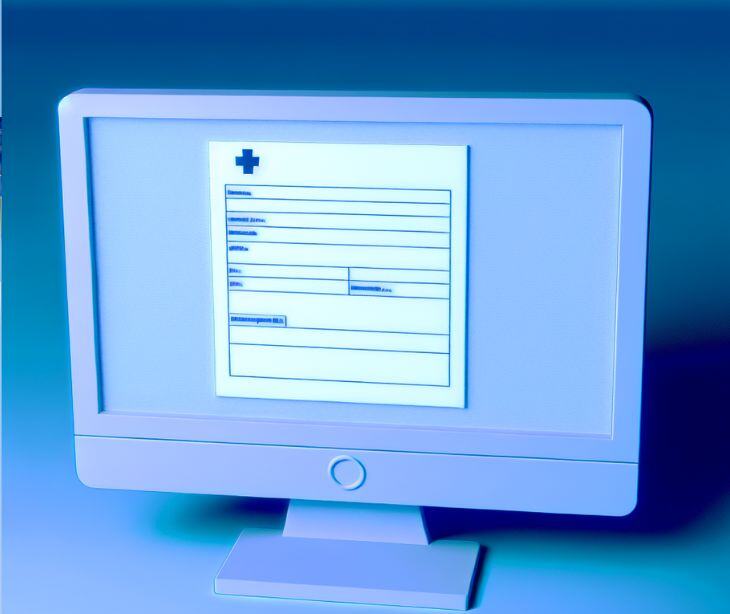
Ensuring compliance with HIPAA in healthcare demands a clear understanding of the types of forms required. This guide provides insights into foundational documents like the Notice and Receipt of Privacy Agreement form, the role of Medical Release HIPAA forms in confidentiality, and the significance of forms such as Custodian Agreement, New Patient Authorization, Health Plan Coverage, and Business Associate Agreement (BAA).
The importance of documentation
HIPAA has stringent requirements regarding documentation, and proper record-keeping is necessary to avoid violations and hefty fines. Organizations need readily available templates for HIPAA forms in their compliance manuals. By effectively documenting and maintaining these forms, healthcare organizations can ensure HIPAA compliance, focus on other important aspects of their business, and protect patient confidentiality.
Notice of privacy practices forms
The notice of privacy practices form is a foundational document that ensures patients have signed and acknowledged the privacy agreement. This form also guarantees that patients receive a copy of the privacy agreement upon request. The privacy agreement outlines how the organization complies with HIPAA regulations to protect patient information.
Additionally, it informs patients about their right to access and request their medical records. Healthcare organizations must retain this form as proof of HIPAA compliance, especially during audits or investigations.
See more: What is a Notice of Privacy Practices?
Medical release forms
Medical release forms play a significant role in maintaining patient confidentiality. These forms must be completed before sharing a patient's medical information with anyone other than the patient, their legal representative, health insurance companies, pharmacies, or treating physicians. Medical information should only be shared on a need-to-know basis to protect patient privacy.
A medical release form is required in various scenarios, such as:
- Sharing protected health information (PHI) with universities for educational or research purposes.
- Disclosing psychotherapy notes.
- Transferring records to a physician who has left the organization but continues to treat the patient.
- Utilizing a patient's recovery story as part of a marketing plan.
Even when patients consent to share their PHI, additional forms may be necessary depending on the specific circumstances.
Read more: Consent vs. permission in healthcare
Custodian agreement form
A custodian agreement form must be signed when a physician leaves an organization and takes a patient's medical records to another establishment. This form outlines the transfer of responsibilities for using and storing the patient's medical records from the covered entity to the concerned organization. By signing this form, both parties acknowledge their roles and obligations in maintaining the security and privacy of the patient's medical information.
Authorization Form
A patient authorization form is a standard intake form that collects basic information about a patient. This form includes details about insurance coverage, the patient's communication preferences, and the assignment of benefits. Healthcare organizations utilize this form to verify a patient's insurance coverage and accurately assess the length of appointments.
See more: What is a HIPAA authorization form?
Health plan coverage and payment request form
Health plan coverage and payment request forms enable healthcare organizations to document a patient's insurance eligibility and financial responsibilities. These forms should outline the organization's policies in cases where the insurance carrier fails to cover specific services or when a patient misses an appointment.
It is important to use HIPAA compliant means of communication and secure platforms for patients to submit payment request forms. This ensures the safe transmission of sensitive information while allowing patients to settle their bills conveniently.
See also: HIPAA Compliant Email: The Definitive Guide
Business associate agreement (BAA) form
Any individual or entity outside a healthcare practice that transmits, receives, processes, or stores Protected Health Information (PHI) must sign a Business Associate Agreement (BAA) form.
The BAA form solidifies an agreement between entities, confirming their responsibilities in safeguarding PHI and complying with HIPAA regulations. Without a signed BAA form, an organization may be held liable for any mishandling of PHI and may face fines and corrective actions for violating HIPAA laws.
Related: Business associate agreement provisions
Additional HIPAA forms and documentation
Apart from the core HIPAA forms mentioned above, healthcare organizations may require additional forms to meet their unique compliance needs. Each organization has varying requirements when it comes to HIPAA documentation. Proper storage, maintenance, and accessibility of these documents are necessary to withstand official audits and ensure HIPAA compliance.
In the news
The settlement between the HHS' Office for Civil Rights (OCR) and New Vision Dental, a Californian dental practice shows the need for HIPAA documentation and forms to protect patient privacy. Following a complaint about disclosures on Yelp, OCR found Dr. Brandon Au, the practice owner, had shared patients' protected health information online.
OCR’s investigators confirmed that Dr. Au had impermissibly disclosed the protected health information of patients on multiple occasions on Yelp, that the practice did not have the required content in its Notice of Privacy Practices, and that it had not implemented appropriate policies and procedures concerning protected health information, including the release of protected health information on social media platforms and in public places.
Read more: Dental practice hit with social media HIPAA violation
Introducing Paubox Forms
Paubox Forms is designed to securely collect patient data in compliance with HIPAA regulations. It's included with the Paubox Email Suite service and features a user-friendly drag-and-drop form builder.
The forms can be customized with various question options, such as text fields, dropdowns, multiple-choice questions, file uploads, and even signatures.
You can adjust question settings, design elements, and manage form settings. Once a form is built, it can be published and linked to websites or emails. Form submissions are viewable in the Paubox Admin Panel, and users can customize submission messages and manage form recipients.
Related:
- How to share Paubox Forms on your website
- What are Paubox Forms? How can they help my business?
- Collect patient data securely with Paubox Forms
FAQs
What is a HIPAA compliant form?
A HIPAA authorization form permits covered entities to use protected health information for purposes other than treatment, payment, or healthcare operations.
What is an authorization form?
An authorization form is a document duly endorsed by an individual or organization that grants permission to another individual or organization to proceed with certain actions.
Are Paubox's online forms customizable?
Yes, Paubox's online forms are highly customizable. Healthcare providers can create forms tailored to their specific requirements using the intuitive form builder.
How secure are Paubox's online forms?
Paubox's online forms are designed to be HIPAA compliant and incorporate industry-standard security measures, including encryption and access controls, to protect patient data.
Can Paubox's online forms be accessed on mobile devices?
Yes, Paubox's online forms are responsive and can be accessed and completed on any device with an internet connection.
Subscribe to Paubox Weekly
Every Friday we'll bring you the most important news from Paubox. Our aim is to make you smarter, faster.



